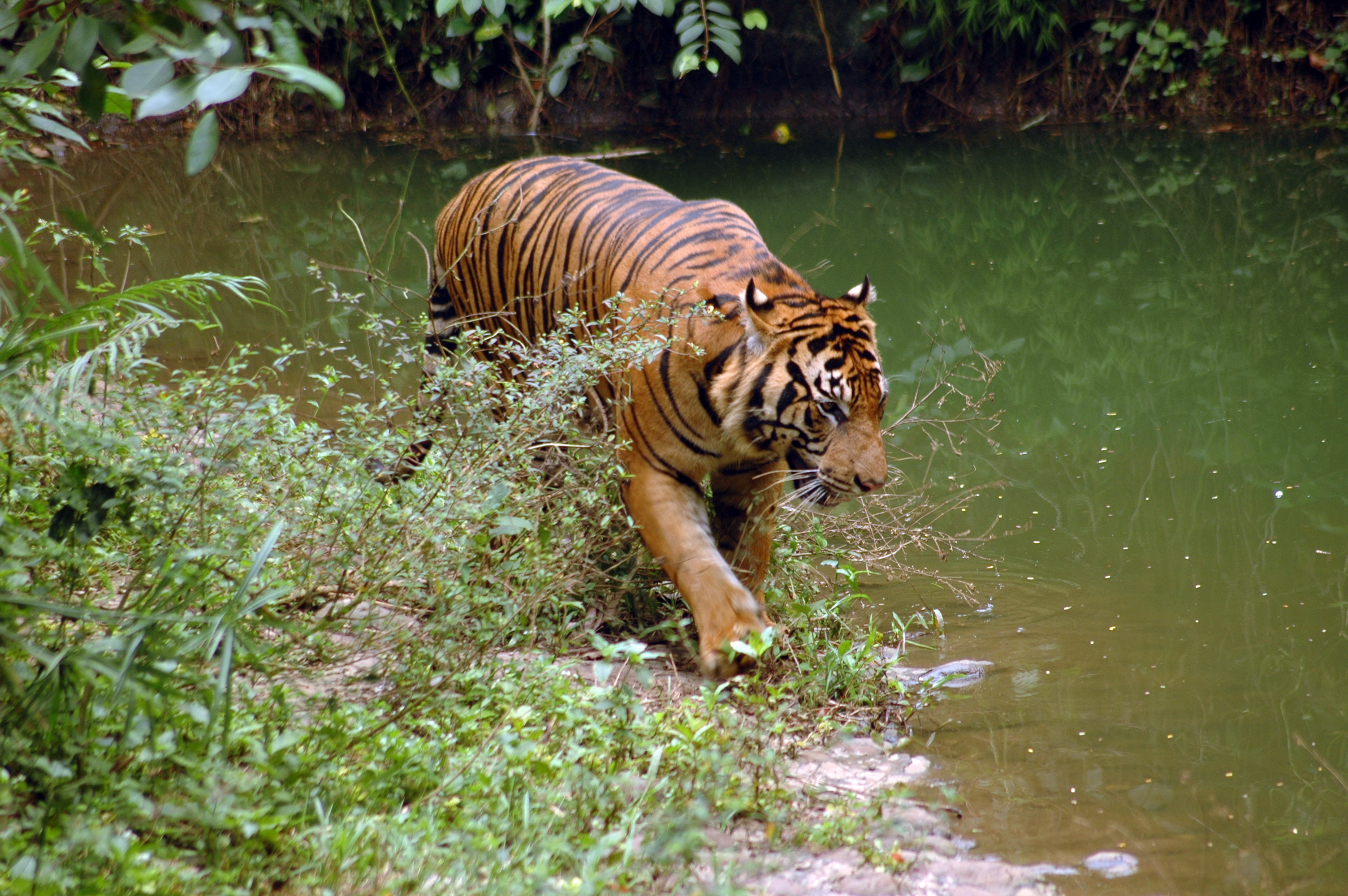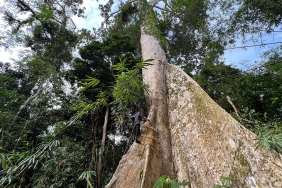THOUSANDS OF MEANINGS IN AN IMAGE
Getting a photo of a Sumatran tiger passing in front of an automatic camera is amazing, but nothing beats photos of a tiger sitting and looking like it's enjoying life like the ones you get in the two main habitats of this endangered tiger: Bukit Barisan Selatan National Park in the Southern Sumatra Landscape and Rimbang Baling Wildlife Reserve in the Central Sumatra Landscape.
Earlier this year, WWF-Indonesia's tiger research team continued its Sumatran tiger monitoring activities in Rimbang Baling Wildlife Sanctuary. This time the team had the opportunity to explore the central part of the protected area. This monitoring activity was challenging because the middle part of Rimbang Baling has higher hills and steeper valleys, but it all paid off with the images obtained. Among the tiger photos obtained in April 2014, 26 photo sequences show a tiger walking slowly, sniffing the ground and finally sitting right in front of the camera. It can also be seen that the tiger is cleaning its body by licking its body parts. Such tiger behavior can be found in zoos or safari parks, but these moments are very rarely recorded in the wild.
In southern Sumatra, our research team in Bukit Barisan Selatan also captured similar images through an automated camera that was primarily targeted to capture Sumatran Rhinos. The tiger, identified as a female, was so playful and active, she spent 3 minutes of her time looking at the camera and managed to get the information sheet attached to the camera to play with. The entire activity of the tiger was captured in 19 photo sequences in November 2012 during the daytime.
Rimbang Baling Wildlife Sanctuary and Bukit Barisan Selatan National Park are two of the few remaining safe havens for wildlife in Sumatra, including the Sumatran tiger, the last of Indonesia's tiger cubs. However, both areas are still not safe from threats such as lack of management by the authorities, habitat fragmentation due to infrastructure development (e.g. roads passing through Bukit Barisan Selatan National Park), poaching of tigers and their prey, and expansion of plantation areas and Industrial Forest Plantations.
In 2010, we celebrated World Tiger Day for the first time, marking a global commitment and especially the commitment of 13 tiger distribution countries, to not only conserve the remaining tiger population, but to double the population by 2022. The images of Sumatran tigers captured relaxed in front of automatic cameras seemed to convey to all of us, that in forest areas free from encroachment, illegal logging, and hunting, tigers can enjoy life and multiply rapidly. Adequate protection, effective management and support from various parties - is a form of implementation of the government's commitment that was pronounced in 2010, so that within eight years, the Sumatran tiger population will double.
Happy 5th World Tiger Day!





